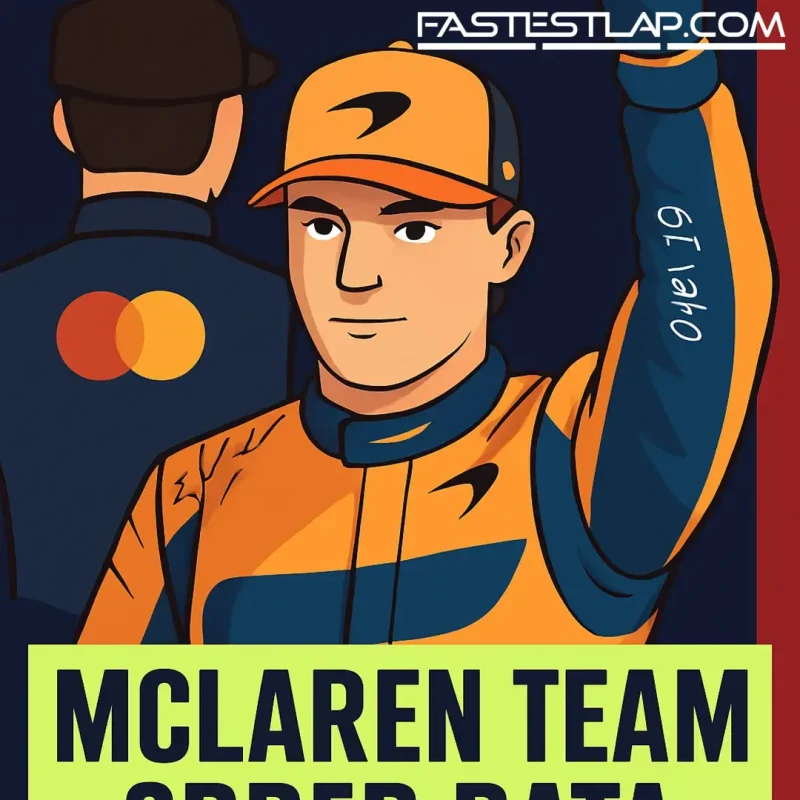McLaren’s Monza call: why Piastri pitted first, Norris got the place back, and everyone went home… sort of happy
McLaren’s Sunday at Monza was a study in risk management that turned into yet another uncomfortable team-order moment. Max Verstappen slipped away out front as expected, but the real intrigue sat in papaya, where Oscar Piastri’s late-race pace surge, a slow stop for Lando Norris and a conservative call to cover Ferrari combined to reshuffle the order — before the pit wall put it back again.
This one started to simmer around Lap 35. Up to that point Norris had done the hard yards, building a cushion over his team-mate beyond six seconds. Then Piastri flipped the script. His pace improved markedly and the gap began to melt. A brief yellow at the Roggia chicane after an incident involving Oliver Bearman and Carlos Sainz didn’t help Norris either; he had to lift through T4–T5 and hemorrhaged around eight tenths to Piastri on that lap alone. The margin was still healthy, but trending the wrong way.
By Lap 46 it was down to 3.5 seconds — comfortable if you mirror stops. Instead, McLaren pulled Piastri first. The explanation was straightforward: cover Charles Leclerc. Ferrari had committed to an early stop on Lap 34 and run the hard tyre, and Leclerc’s lap times began to pick up from Lap 41. McLaren didn’t fancy leaving the door cracked for a late red car ambush.
It was an unusual sequence all the same. Convention says the lead car holds first call to avoid undercuts and intra-team swaps; we’ve seen how messy it gets when you don’t follow that script. But McLaren were juggling two fires: protect against Leclerc’s upswing on one side, while keeping the pit window open in case a timely Safety Car offered a shot at Verstappen on the other. They chose the cover.
Then came the gut punch. Norris boxed a lap later and a front-left delay ballooned the stop to 4.5 seconds — about two seconds slower than standard. Coupled with Piastri’s fresh softs and Norris’s cold rubber on exit, the undercut bite was inevitable. Piastri rejoined ahead by just over a second; Leclerc, crucially, was nowhere near, sitting roughly 4.5 seconds back of the McLaren that had just pitted. The threat that drove the decision was, in the end, contained.
What followed was familiar. McLaren instructed a swap. Piastri complied without theatrics, Norris moved back into position, and the team neutralised a mess that, ironically, began with their attempt to avoid a different one. Given how track position and tyre offset lined up in those final laps, an on-track fight between the pair was unlikely to stay clean, never mind wise.
The debate, inevitably, will fixate on two points. First: should the trailing car ever be boxed first when both are free of traffic? McLaren will say context matters, and they won’t be wrong — Leclerc’s pace curve gave them a headache, and the team’s horizon isn’t one lap wide. Second: would any of this have mattered without the slow stop? Probably not. A two-second delay at the gun is the kind of human error that can gut a driver’s race without any grand conspiracy attached to it. It happens.
Strip it back and the sequence looks like this: Norris built the day, Piastri earned the right to pressure late, the pit wall hedged against Ferrari, the gunman blinked, and the team put the order back where it started. Not pretty, but pragmatic. Piastri didn’t do much wrong and still gave the spot back. Norris lost a place in the lane and got it returned. Leclerc was kept at arm’s length throughout.
If you’re searching for the bigger picture, it’s this: McLaren are operating with a clear, team-first playbook in the kind of fine-margin races that decide constructors’ silverware and, occasionally, swing a drivers’ campaign. That will always sting one side of the garage on days like this. But it’s also why, when a slow wheel change sends the dominos tumbling, the radio call comes quickly and the drivers don’t make it worse.
Will it quiet the noise? Not entirely. Every time McLaren shuffle positions, the “papaya rules” label gets dusted off and the discourse starts again. But on the evidence at Monza, the call achieved what it set out to do: protect the team’s result, keep Ferrari behind, and avoid friendly fire. In a season where the margins for the orange cars are measured in tenths and tyre warm-up windows, that’s the kind of cold-blooded thinking they’re clearly prepared to live with. Whether both drivers feel the same way when it happens in a title-critical moment is a question for another Sunday.




